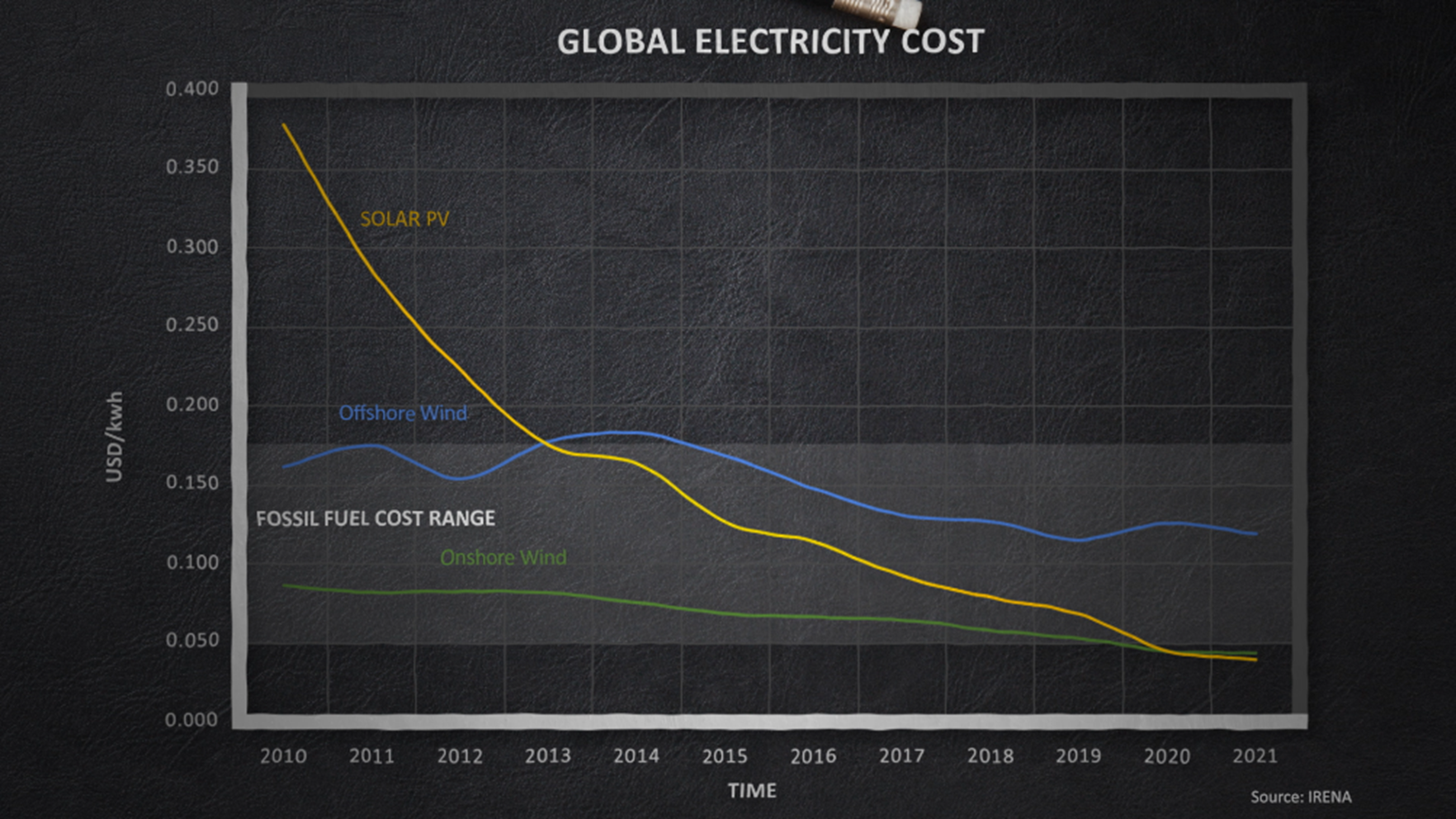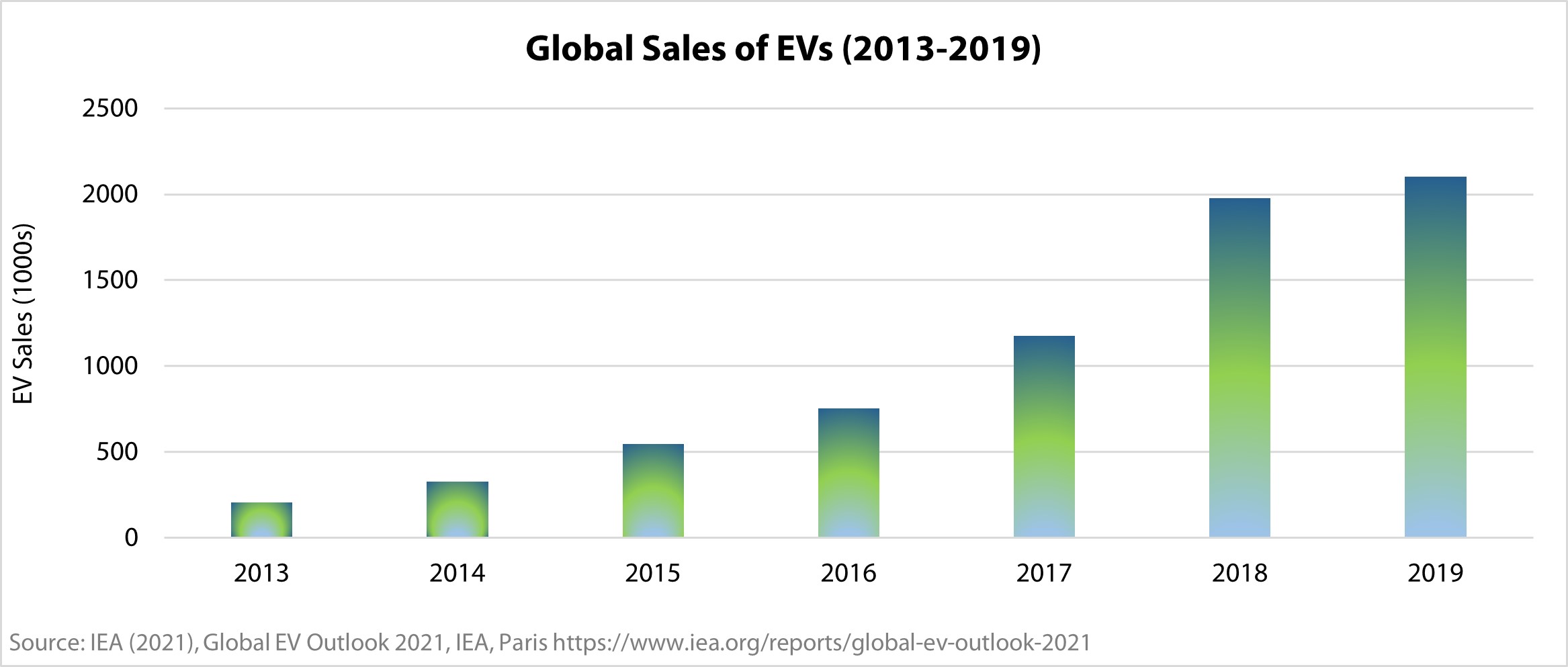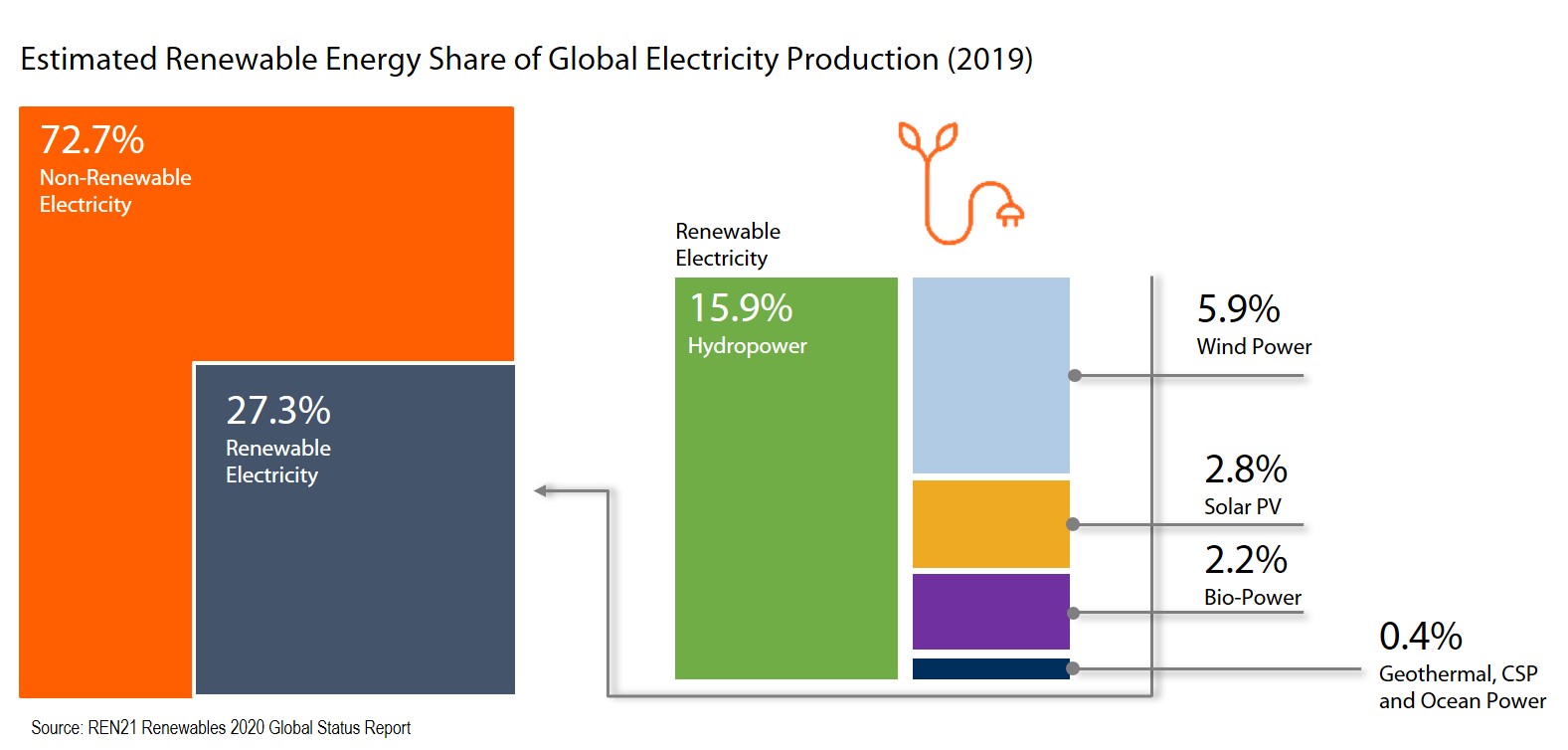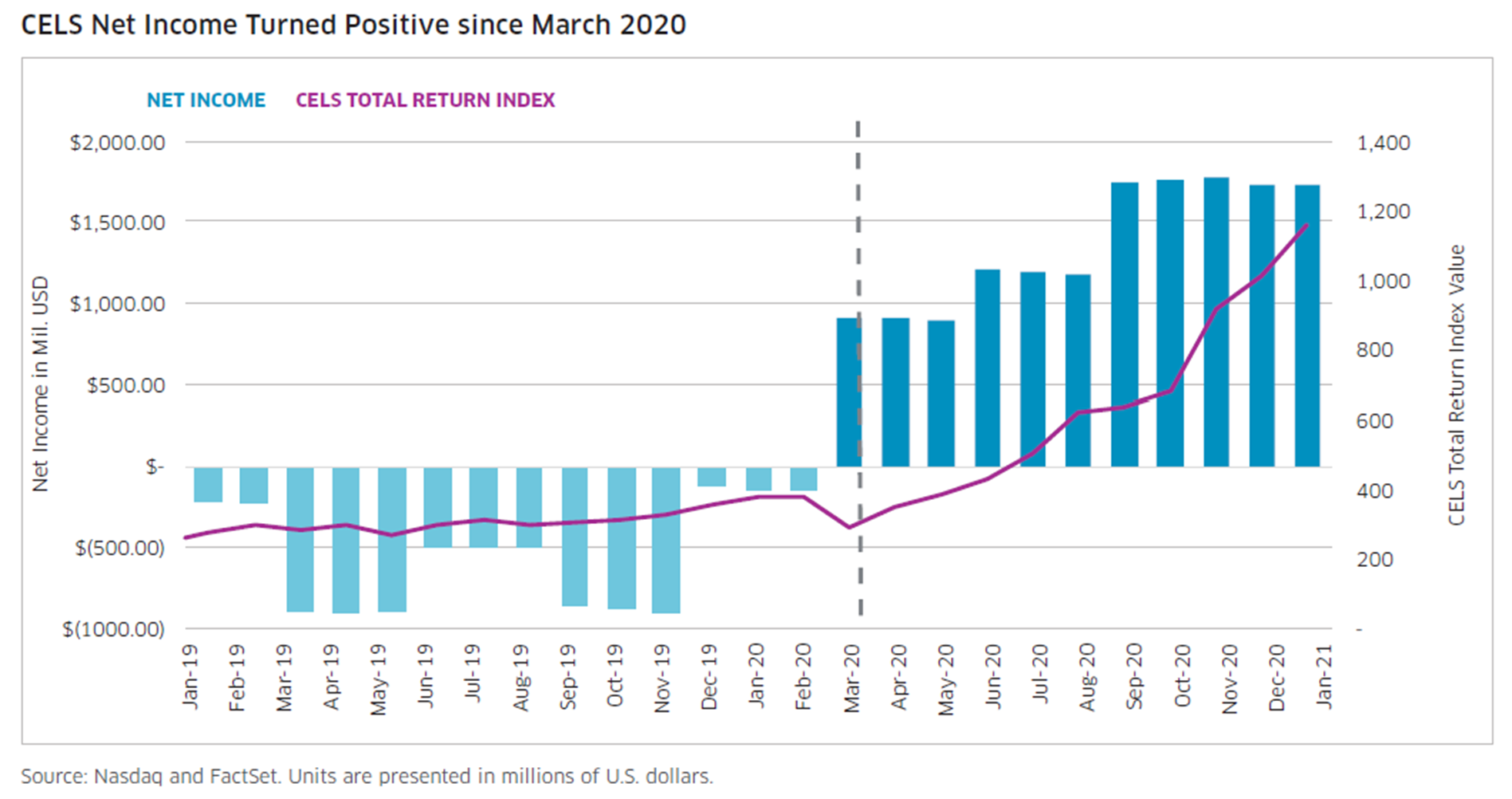Clean energy is part of a seismic shift – one that will ultimately shape future society and business models, underpinned by the global effort to achieve net zero by 2050. 2020 witnessed the first time that annual energy transition investment topped $500bn(1). This investment shift from fossil fuels to clean energy has been underpinned through growing interest and activity in a net-zero world. And we believe it is just getting started.
Currently, investing in the clean energy revolution raises several key questions: “Have I missed the boat?,” and if not, “how much growth is left?” and “where are the real return opportunities to invest?” Below are five major drivers at the forefront of the global energy market transition:
1. Declining Costs – solar and wind power have become more attractive, from an economic standpoint, than coal, nuclear, and even natural gas in a growing number of global markets for new capacity additions (and increasingly even as replacements).
2. Investment Shift – from fossil fuels to clean energy. In 2020, investments in the energy transition including renewables, EVs, and energy storage surpassed $500bn globally.
3. Government and public support – the introduction of new low-carbon policies and spending plans in the U.S. and across Europe and Asia.
4. Smart grid infrastructure – the rise of electrification and the urgent need for a more robust and resilient smart grid. This is particularly playing out in the storage and mobility sectors -- supported by trends in digitization and decarbonization.
5. Low-carbon policies – a huge number of both national and subnational governments have signed commitments to reduce their carbon footprints. We also witnessed the US perform a U-turn and rejoin the Paris Climate Accord.
Where can we invest? Where is clean energy profitable?
Wind and solar power are on a declining cost trajectory (acting more like their high-tech counterparts), whereas fossil fuels have ongoing and often unpredictable fuel costs. One of the biggest developments in recent years is that solar PV and onshore wind both became cheaper sources of energy than even the lowest-cost fossil fuels (in most geographies).

Source: Irena and First Trust
Over the last decade, the fundamental driver of falling costs has been technological innovation. Solar, for example, has seen substantial private sector investment, and, with this financial backing, companies are simply able to produce more. An increase in production has led to better understanding and insights, which in turn has improved the solar PV manufacturing process –creating a virtuous cycle of increasing demand and falling prices. It’s important to note that fossil and nuclear fuels do not currently have this advantage.
However, while solar and wind are playing a greater role in power generation, without effective energy storage, conventional energy sources are still needed for times when the sun isn’t shining or the wind isn’t blowing. So large-scale and distributed storage, along with the development of a “two-way” grid, are instrumental if we are to shift away from a world dependent on fossil fuels.
Focus shifting to EVs, storage and the grid
The global electric-vehicle market has huge growth potential, as traditional internal-combustion cars have been a significant source of carbon emissions. Here we expect to see multi-trillion-dollar investments to create sustainable high-tech transportation and a speedup in EV adoption. However, it’s not all about cars….but also buses, fleets and trains. We are already seeing a momentum shift in this space with Tesla, for example, developing its other businesses in electric trucks and energy storage.


Source: https://www.iea.org/reports/global-ev-outlook-2019
Innovators such as Tesla and NIO are awaiting competition from iconic industry mainstays, as Ford, Daimler, GM, and others have begun adopting electrification in their entire line-up.
However, with this anticipated surge in EVs comes the growing need to recharge vehicle batteries, which will require innovations in developing a higher-powered and more robust charging infrastructure. Many energy generation and distribution firms view providing charging infrastructure as a means of diversifying beyond liquid fuels to safeguard future revenue. Also, many utilities are developing a backbone of charging locations to better serve customers in their area (like the Tesla Supercharger Network). The vehicle grid integration services market is expected to reach $1.4bn billion annually by 2030, according to Guidehouse Insights.
The growing energy storage market offers no shortage of investing opportunities. For the US, an interconnected power grid would unleash a potential $7.8trn in private investment, as highlighted by Forbes, create six million good-paying jobs, and reduce consumer costs while meeting Paris Agreement climate goals.
Hydrogen, an area of future growth?
Hydrogen has been the fuel of the future for decades, always promising to deliver huge benefits.
The future continues to inch closer with seven of the biggest green hydrogen project developers working together to launch the Green Hydrogen Catapult Initiative - to increase production 50-fold in the next six years.
Green hydrogen is produced using renewable energy and electrolysis to split water, distinct from its grey counterpart that is produced from methane and releases greenhouse gases. What makes hydrogen such a compelling growth area?
Currently, green hydrogen sells for $6 per kg, and research suggests that $2 per kg would be a potential tipping point that will make it commercially viable. The economic case has begun to solidify. Costs are falling, down 40% since 2015, and are expected to fall an additional 40% through 2025, according to IHS Markit.
Green hydrogen could supply up to 25% of the world’s energy needs by 2050 and become a US$10 trillion addressable market by 2050, according to Goldman Sachs. Multiple countries have recently published their national hydrogen strategies, including the US and South Korea.

In conclusion, we believe the future is bright and while there have already been solid investment returns, it looks like the story is just getting started. In March 2020, the earnings of the NASDAQ Clean Edge Green Energy index went positive for the first time (see chart below). And the estimates are for those earnings to grow from $1.7bn as indicated to $17bn, an average of 117% growth per year through 2023, according to Nasdaq. There may in fact be a tailwind to a sunnier future.

Gregg Guerin is senior product specialist at First Trust
https://www.bloomberg.com/news/articles/2021-01-19/spending-on-global-energy-transition-hits-record-500-billion
Important Information
Nothing contained herein constitutes investment, legal, tax or other advice and it is not to be solely relied on in making an investment or other decision, nor does the document implicitly or explicitly recommend or suggest an investment strategy, reach conclusions in relation to an investment strategy for the reader, or provide any opinions as to the present or future value or price of any fund. It is not an invitation, offer, or solicitation to engage in any investment activity, including making an investment in a Fund, nor does the information, recommendations or opinions expressed herein constitute an offer for sale of a Fund.
References to specific companies above should not be construed as a recommendation to buy or sell any securities in said companies and should not be assumed profitable.



